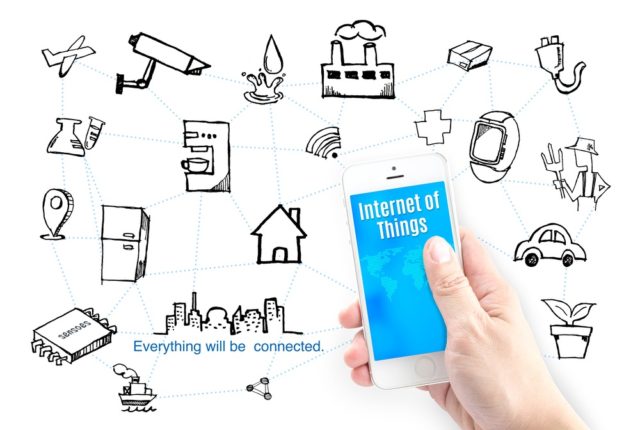Uwe Kubach, SAP, gаve a lecture at CEEDS’15 by Webit about the possibilities that Internet of Things gives us, why it is the next logical step after Machine-to-Machine and what challenges lie ahead of us. The main accent of the talk is “what IoT means for enterprise applications?” and it focuses on the impact that IoT has on big businesses and business models.
According to most of the surveys, we are going to have 12-50bn connected devices and 40-50% growth rate on the M2M market by 2020. The prices of communication modules have already declined by 80% and will most probably keep going down in the next decade.
There are several reasons why M2M and IoT have gained speed in the last years, one of them being the much cheaper price of technology nowadays. However, the most important reason probably is the fact that technology has become more mature and reliable. We can now build solutions and application on top of the technology. For example, we know you will have mobile coverage everywhere, which enables us to create solutions that would have been impossible 10 years ago.
Looking at the history of the field we can see how it all started with embedded systems – putting a computer or a piece of hardware inside a physical object, like microwaves or fridges. However, this system has no communication with the outside. The next step is networked embedded systems, where you have multiple piece communicating with each other, but still within the bounds of the physical object (e.g. all the different systems on your car). After that, the logical development was making these whole systems communication with each other. In the beginning it was just M2M (machine-to-machine) where one object can communicate with another one. The final step we have gotten to is the Internet of Things, where every one of those systems can talk to all the rest.
The important differences between M2M and IoT is that in the older model you only have 1-to-1 communication – two systems that are not integrated to work with each other can’t do it without extra programming. This problem is solved in the IoT structure, where all the systems use the same protocols, allowing you to pool all the information in the cloud and then let all the machines access it. There is still the challenge to find the right data models, that are not too specific and not too generic, but it is not unsolvable.
The best thing we get out of the Internet of Things structure is the real-time transparency. You don’t have to work on planning data or estimation anymore, as you can get all the data on demand. For example, you can get the number of cars on a certain road in real time and thus find a better route. This will also allow business to introduce new business models. For example, a company which has been selling compressors can now move to selling cubic meters of compressed air instead. You are not paying for the machine, but for the time you have used it. Having all the answers to questions like “how much has the machine been used for?”, “what is it used for?” and so on, will enable you to provide a much better service and customer support, being able to react to problems as they occur.
If the companies agree to share the information they get to other companies, this can enable us to improve the whole supply chain.
With the information flow coming in real time we can now not just analyse the data retrospectively and make changes according to the results, but we can set triggers that come into play in real time as the data changes. For example we can start an automated task if we see something going wrong with a system or a machine. From there on you can go even further and try to predict when something will go wrong with a machine.
To sum up, Internet of Things will enable us to not only create new business models but also improve existing ones. The access to real time data will change the way we perceive problems and the ways we deal with them. There are several challenges along the way but none of them unsolvable.
